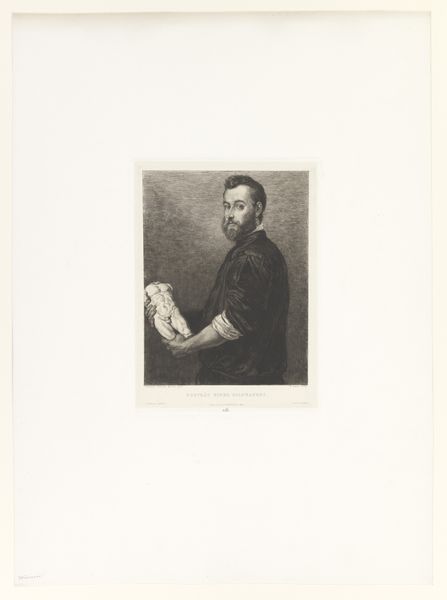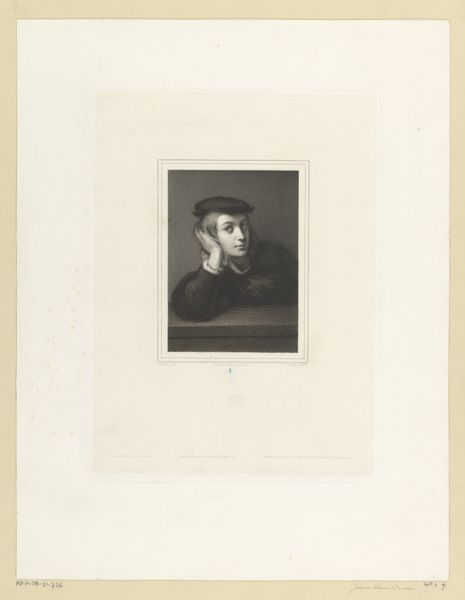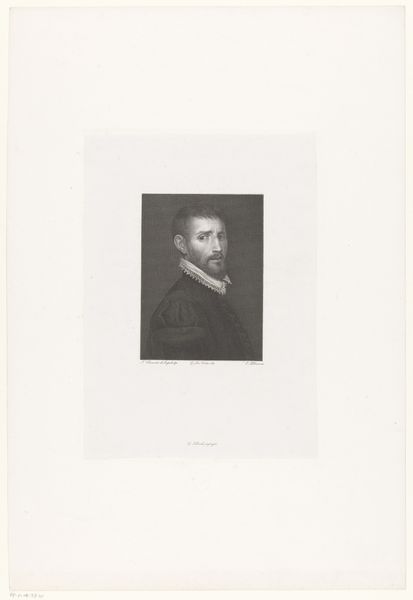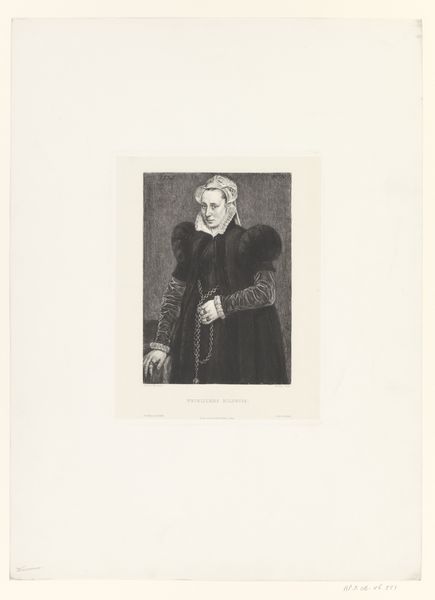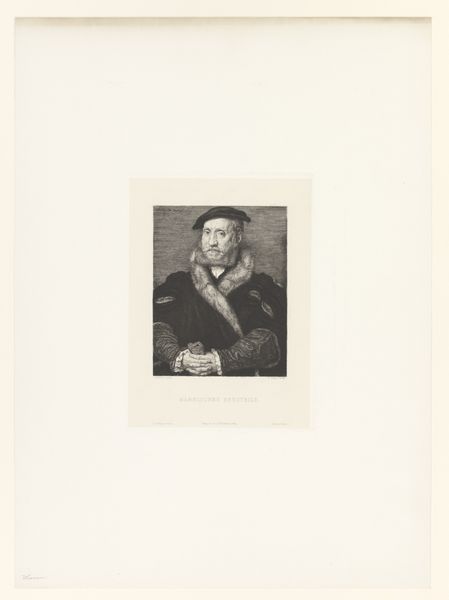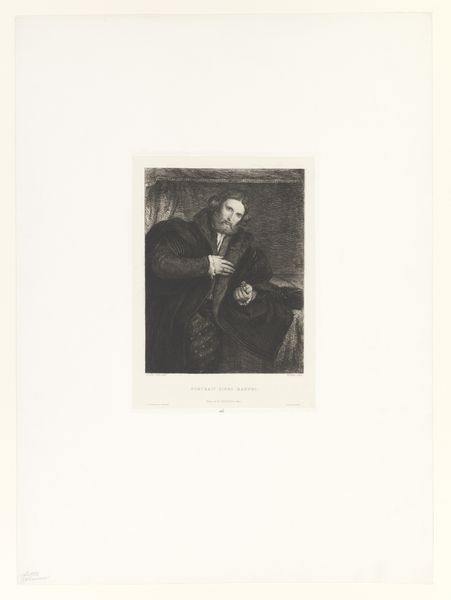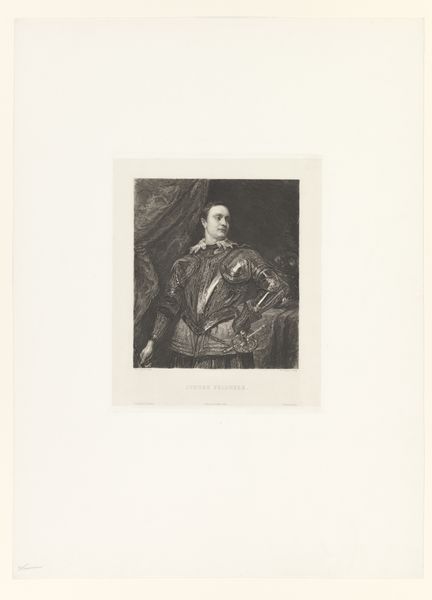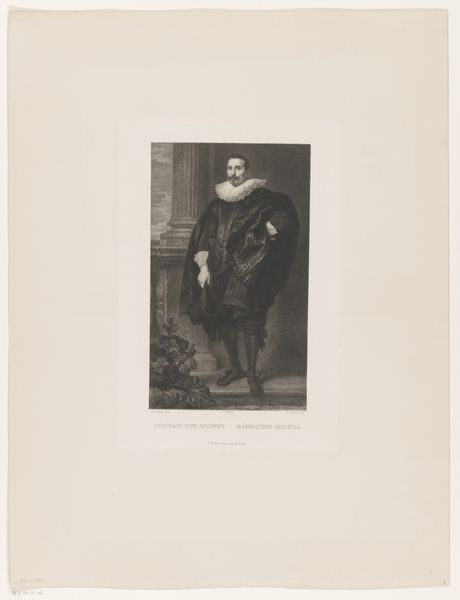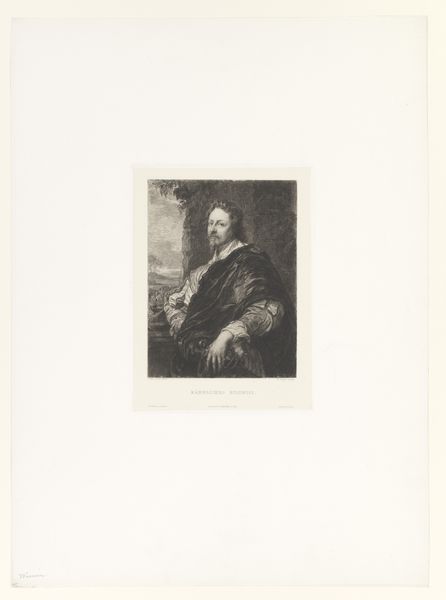
print, etching
#
portrait
#
pencil drawn
# print
#
etching
#
old engraving style
#
history-painting
#
tonal art
#
realism
Dimensions: height 319 mm, width 245 mm
Copyright: Rijks Museum: Open Domain
Editor: This is "Portret van Benedetto Varchi," made sometime between 1861 and 1889 by William Unger. It’s an etching, which is a type of print. It feels like peering into the past, but what grabs me is the texture – you can almost feel the velvet of his robe. What strikes you about this piece? Curator: It's compelling to consider Unger's choice of etching for reproducing this portrait. Etching, unlike painting, lends itself to mass production. How does this democratizing aspect—making the image accessible to a wider audience through printmaking—change the perception and value of the portrait itself? Consider the labor involved; the skill of the etcher translates the original artistic vision into a reproducible commodity. Editor: That’s interesting, I never really thought about the labour involved. Curator: Indeed. The materiality of the print – the paper, the ink, the etched lines – speaks to a broader social and economic context. This wasn't just about immortalizing Varchi; it was about creating a tangible object, subject to market forces and systems of distribution. Does understanding the “how” of its creation affect your perception of the “who” represented? Editor: Definitely. Knowing it’s a print, it shifts the focus from individual artistry to a sort of industrial process. It also challenges that traditional idea of art being unique and precious. Curator: Precisely! By foregrounding the means of production and the accessibility of the final product, we challenge those established boundaries. This changes how we assess the artistic value; it’s not just about the likeness but also the social function the etching serves. Editor: So, it's about re-evaluating art based on how it was made and its place in society, not just what it looks like. Curator: Exactly. Thinking about art in terms of materials and modes of production gives us a powerful lens to understand its historical and cultural significance. Editor: I’ll definitely be looking at art with new eyes now! Thanks for opening my mind to it.
Comments
No comments
Be the first to comment and join the conversation on the ultimate creative platform.

